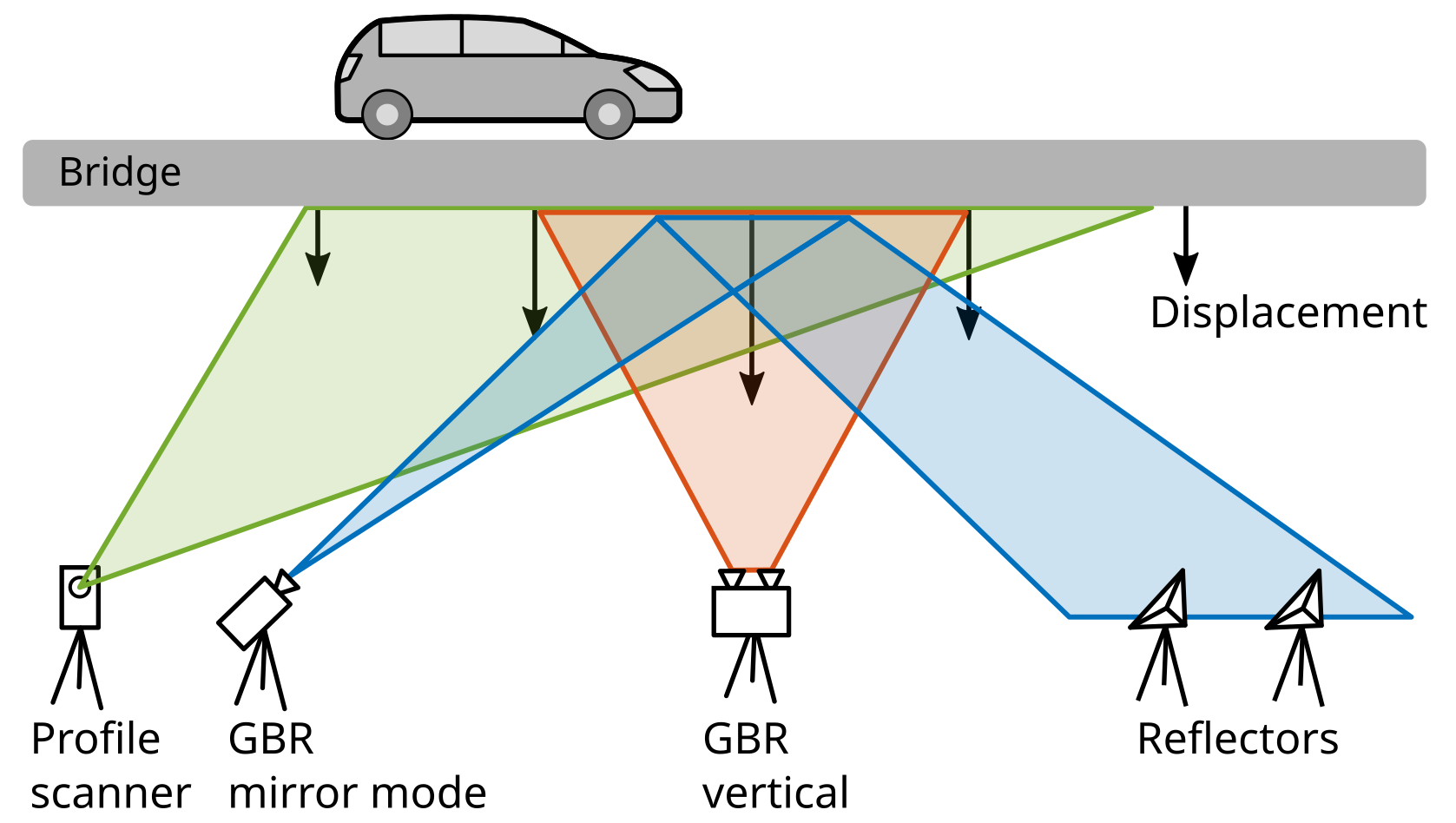In this paper, we introduce a non-invasive approach for monitoring bridge infrastructure with ground-based interferometric radar. This approach is called the mirror mode, since it utilises the flat surface of the bridge underside as a mirror to reflect the signal to a corner reflector on the ground placed opposite of the radar sensor. For proving the feasibility of this approach, a measurement campaign has been carried out at an exemplary bridge in Karlsruhe (Germany) including a radar sensor in mirror mode, a second radar sensor in the default mode and a laser profile scanner. We investigate the potential of this approach to monitor the bridge displacement in vertical direction and compare the results with the two other sensors. The derived results reveal the potential for monitoring bridge infrastructure. Finally, we propose further research aspects of this approach to analyse its capabilities and limitation in the context of non-invasive infrastructure monitoring.

